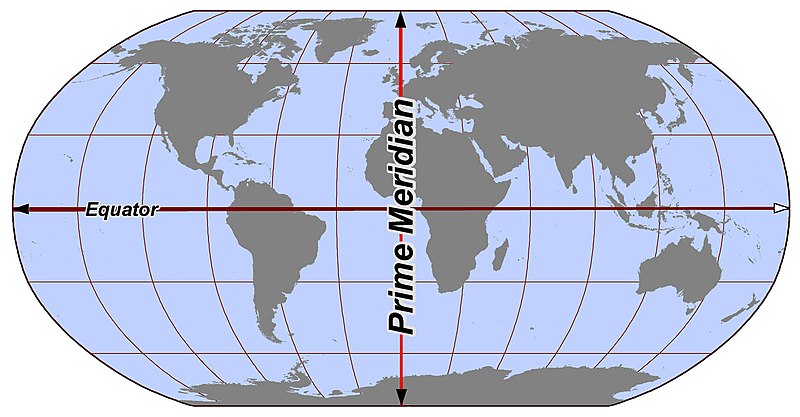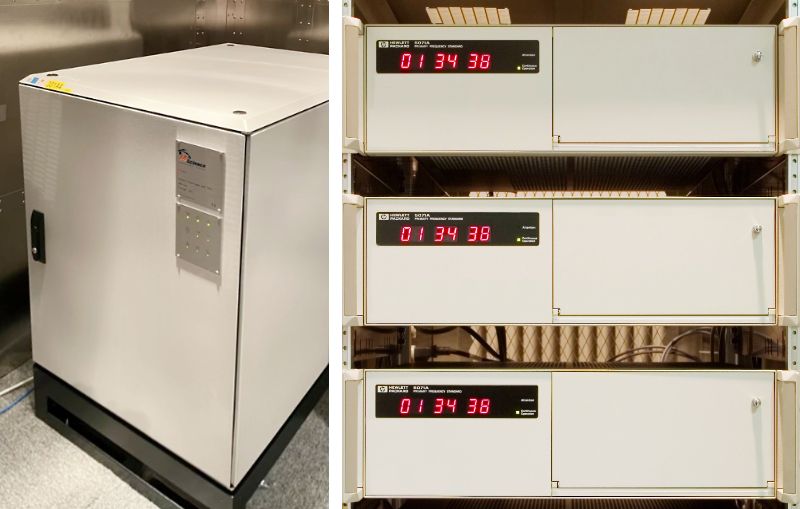Japan Standard Time

Standard Time in Japan is legally defined to represent the local time at the 135th eastern meridian, an arrangement that originated in the Meiji era and dates back as far as 1886 [1]. It followed the International Meridian Conference in 1884, which established a Prime Meridian passing through the Greenwich Royal Observatory in London. Considering that Earth rotates 360 degrees in 24 hours, this means that time in Japan is exactly 9 hours ahead of the time in Greenwich, which used to provide the standard known as Greenwich Mean Time (GMT), based on exact astronomical measurements. Today, the international time scale of Coordinated Universal Time (UTC) is based on precise atomic clocks, but the 9-hour time difference of Japan Standard Time has been maintained.
The Japanese Ministry of Internal Affairs and Communications (MIC) is responsible for providing standard frequencies, transmitting standard radio waves, and reporting standard time [2]. These tasks have been assigned to us at the National Institute of Information and Communications Technology (NICT), where we create, distribute and compare Japan Standard Time signals, both nationally and internationally.
Definition of the SI second
Since we interact with time most directly through the change of day and night or the change of seasons, the original units of time were linked to the rotation of the Earth and its motion around the sun. However, the measurements required to achieve greater accuracy became more and more complex, and it was soon found that the rotation of the Earth itself constantly changes due to the effects of tidal friction and the motion of the mantle and atmosphere.
In 1967, the definition of the second in the SI international system of units was changed to one based on quantum mechanics rather than astronomy. In its latest wording [3], it reads "The second, symbol s, is the SI unit of time. It is defined by taking the fixed numerical value of the caesium frequency ΔνCs, the unperturbed ground-state hyperfine transition frequency of the caesium-133 atom, to be 9 192 631 770 when expressed in the unit Hz, which is equal to s⁻¹."
Cesium atomic clocks realize this definition as closely as possible by generating a microwave signal near 9.2 GHz and adjusting it until it has the correct frequency (the number of cycles per second) to perfectly excite a sample of cesium atoms from one specific quantum mechanical state to another. As long as this resonance is maintained, 9 192 631 770 oscillations of this signal represent exactly one second according to definition.
International Atomic Time
A time scale is created by continuously counting the oscillations of the clock signal and incrementing the number of seconds whenever the correct number of cycles has passed. The International Atomic Time (TAI) maintained by the International Bureau of Weights and Measures (BIPM) [4] is based on measurements of many atomic clocks around the worlds to make it both robust and accurate. It was synchronized with the Universal Time 2 (UT2), the best previous astronomical time scale, at 0:00 on January 1, 1958. Since then, the two time scales have drifted apart.
Coordinated Universal Time and leap-second adjustment
From the beginning of the atomic time scale, it has been a concern that the difference from astronomical time might become too large, that the day of the TAI scale might drift away from the day determined by the sun. Today, this is addressed by the addition of "leap seconds" to the Coordinated Universal Time (UTC) derived from TAI. UTC advances at the same rate as TAI, but whenever the difference between UTC and the astronomical Universal Time UT1 becomes larger than 0.9 seconds, an additional second is inserted into UTC, or removed from it. This maintains the accuracy of the atomic definition of the second, while keeping time sufficiently consistent with Earth's rotation. When this system was introduced, UTC was initially offset on January 1st, 1972 to trail behind TAI by 10 seconds. Since then, an additional 27 seconds have gradually been added, such that UTC is now (in January 2023) a total of 37 seconds behind TAI.
Japan Standard Time

To generate Japan Standard Time (JST), NICT uses its own atomic clocks to create a UTC(NICT) signal following the same definition. This is then advanced by 9 hours to provide JST. UTC(NICT) and JST are currently determined using up to four hydrogen masers, about 18 cesium atomic clocks, and one strontium optical lattice clock.
The hydrogen masers provide a very low-noise signal that allows for a precise measurement of time without the need for a long measurement period. However, their frequencies typically change over time, which would cause the length of one second to change if not corrected. The cesium atomic clocks have better long-term perfomance and give stability to UTC(NICT) for durations longer than 5 days. Finally, the duration of one second of UTC(NICT) is periodically measured and fine-tuned using the strontium optical lattice clock. This minimizes the deviation of UTC(NICT) from UTC and allows for the generation of accurate Japan Standard Time [5] .
The frequency of these atomic clocks is easily affected by external disturbances such as vibrations, or even slight variations to environmental temperature, humidity, and magnetic field. To keep the frequency as stable as possible, the hydrogen masers and cesium clocks are therefore installed in temperature-and humidity-controlled “clock rooms” with electromagnetic shielding. Each atomic clock is also connected to an uninterruptible power supply unit with a large-capacity rechargable battery in case there is a power outage. The stontium optical lattice clock operates in a similarly controlled environment, and its construction further shields the atoms from outside effects.
The time difference between the cesium atomic clocks and the hydrogen masers installed in the four clock rooms is measured every second. Coordinated Universal Time UTC (NICT) is then synthesized by an hourly adjustment of the output frequency based on the average over all clocks, calculated from the difference data. Finally nine hours are added to obtain JST. The generation of Japan Standard Time is fully automatic. The signal is also generated independently by multiple redundant systems, so that equipment failure will not cause any interruption.
Decentralization
Originally, Japan Standard Time was only generated at NICT headquarters in Koganei, Tokyo. But if this location is affected by a natural disaster or other emergency, time scale generation might stop due to infrastructure damage.
We are therefore proceeding with research and development towards decentralization of the facilities to improve reliability and resilience. As the initial step, a JST sub-station in Kobe, in Hyogo prefecture, started operation on June 10, 2018. This sub-station is equipped with all basic functions necessary for Japan Standard Time generation, such as cesium atomic clocks and a high-precision satellite time and frequency transfer system. The two accurate time scales generated in Tokyo and Kobe are continuously compared. And in case of an emergency in Tokyo, the Kobe sub-station can function to maintain and supply Japan Standard Time.
Further development of technology to consolidate multiple time scales will improve both robustness and accuracy of JST by using atomic clocks in additional locations, including the existing radio transmission stations.
Footnotes and links
[1] Imperial Edict No. 51 (13 July 1886, Meiji 19), available online at the National Diet Library Digital Collection, DOI 10.11501/2944130 (Japanese)
(Japanese)
[2] Act for the Establishment of the Ministry of Internal Affairs and Communications, Article 1-4, Paragraph 68 (16 July 1999, Heisei 11), available online at e-Gov Law Search (Japanese)
(Japanese)
[3]
Mise en pratique for the definition of the second in the SI , available at www.bipm.org/en/publications/si-brochure
, available at www.bipm.org/en/publications/si-brochure
[4]
BIPM technical services: Time Metrology (www.bipm.org)
(www.bipm.org)
[5] The World’s First Use of an Optical Lattice Clock to Keep National Standard Time – An accurate clock keeps an autonomous Japan Standard Time in sync with UTC, NICT Press Release 20 June 2022
20 June 2022

